Introduction
At the GWCT we have a wide experience of studying and publishing work on the spectrum of activity of pesticides in field studies, including organophosphate, carbamate and pyrethroid insecticides, fungicides and herbicides. However, our experience with neonicotinoids is more limited, and we have not yet published our research in this area. The use of neonicotinoids is an issue with far-reaching implications for both conservation and farming, and it is important to understand the evidence as fully as possible. Therefore, we provide here an overview of the relevant literature and expert opinion to date.
Background
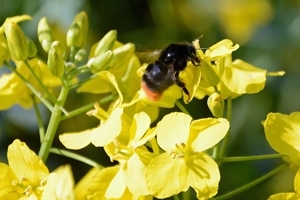 Neonicotinoids (neonics) are a class of insecticide commercialised in the 1990s by the chemical company Bayer. Their use grew rapidly, and by 2008 a single compound from the group, imidacloprid, was the most commonly used pesticide in the world1.
Neonicotinoids (neonics) are a class of insecticide commercialised in the 1990s by the chemical company Bayer. Their use grew rapidly, and by 2008 a single compound from the group, imidacloprid, was the most commonly used pesticide in the world1.
Neonics are a family of chemicals that bind to a specific protein in the brain of insects, causing paralysis and death. They bind with much greater strength to this protein in insects than in mammals and birds, meaning that their toxicity is generally less, although it varies considerably between compounds1. They are very effective against sucking insects, for example aphids, which can be problematic for cereal crops, as well as against the cabbage stem flea beetle larvae, which attacks oilseed rape. Uncontrolled, such pests can have dramatic effects on certain crops, leading to reduced yields and serious economic impacts. Furthermore, oilseed rape is a valuable break crop in the crop rotation, helping with the control of otherwise persistent weeds such as black grass that would otherwise require additional chemical control. Negative impacts of neonic use on other crop yields, such as soy beans, has been demonstrated but not quantified.
Neonics can be applied in various ways including the traditional spray (foliar) application, however by far the most common method of use is in seed coatings. Unlike other treatments, which are sprayed onto the leaves of crops, neonic seed coatings are absorbed by the seed and then travel throughout the plant. The systemic action ensures that all areas of the plant are protected against pests, and this protection persists for up to ten weeks. The presence of insecticide throughout all plant tissues for a period of time has several consequences – for instance seed dressing may reduce the need for subsequent spray treatments, so that farmers are spraying fields fewer times throughout the year. Evidence suggests that spray applications are indeed reduced for seed dressed oil seed rape crops2, however research examining other crops is limited to date. The systemic mode of action of neonics also means that the substance can be present in the pollen and nectar of flowering plants that have been grown from treated seeds. This has raised concerns that the widespread use of neonic insecticides may be partly responsible for the recently documented declines in pollinator species such as bees.
Neonic persistence in and movement through the environment has been the subject of much research, and is dependent on many factors. These include: temperature, soil composition, moisture content and exposure to ultraviolet light, therefore neonic persistence is highly variable in different locations. Typically, after application, neonic concentrations decline rapidly in soil as a result of plant uptake, leaching into water, binding to the soil and breaking down through microbial action. However, in some soil conditions, lengthy half-lives have been reported for both imidacloprid (100-1,000 days) and clothianidin (150-7,000 days). It is therefore difficult to predict for how long neonics are present in any environment, but this can be for long periods of time, and concentrations may gradually increase, accumulating with yearly applications3. Some evidence suggests that nearby non-crop plants such as wildflowers may take up neonics from this source, thus potentially increasing overall exposure for bees and other non-target insects4,5.
It is becoming clear that, although classified together, different neonic compounds can have very different effects. Recent studies have documented clear differences in the effect of three neonic pesticides on bumblebees, demonstrating that although imidacloprid and thiamethoxam reduced bumblebee colony strength, no impact was detected following exposure to clothianidin6. Therefore, some neonics may have more severe effects on non-target organisms than others. These results are encouraging, highlighting that investment in research and development of newer generation pesticides, including neonics, may result in products that offer a suitable range of pest control with reduced impacts on non-target species and the wider environment.
Effects on non-target species
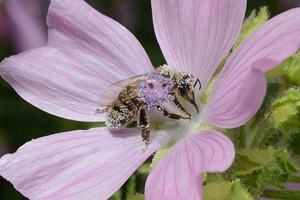 Pollinators play a critical role in agriculture, with 87 of the leading food crops globally depending on insect pollination7. This accounts for over a third of the world’s food production by volume7, and is estimated to have an annual value of £136 billion8. Bees are the main pollinating insects, including the honeybee, bumblebees and other wild and solitary bees, all of which are involved in the pollination of not only crops, but also wildflowers7,9. Although domesticated honeybees are by far the most numerous and provide other foodstuffs, mainly honey, bumblebees are thought to be almost solely responsible for the pollination of certain crops including soft fruits9,10. The important role that pollinators play in agriculture, along with pollination of many wild plants and the biodiversity represented by the species themselves, leads to serious concerns regarding the recent crisis in bee health. It is important to determine whether neonics do indeed contribute to these effects.
Pollinators play a critical role in agriculture, with 87 of the leading food crops globally depending on insect pollination7. This accounts for over a third of the world’s food production by volume7, and is estimated to have an annual value of £136 billion8. Bees are the main pollinating insects, including the honeybee, bumblebees and other wild and solitary bees, all of which are involved in the pollination of not only crops, but also wildflowers7,9. Although domesticated honeybees are by far the most numerous and provide other foodstuffs, mainly honey, bumblebees are thought to be almost solely responsible for the pollination of certain crops including soft fruits9,10. The important role that pollinators play in agriculture, along with pollination of many wild plants and the biodiversity represented by the species themselves, leads to serious concerns regarding the recent crisis in bee health. It is important to determine whether neonics do indeed contribute to these effects.
Neonics have been detected in the pollen and nectar of treated crops, which provide the dietary protein and energy required by bees that forage on them. Some studies have also detected traces of neonics in pollen from bee hives, honey, beeswax and the bees themselves, although these findings are not consistent across all studies11. It is established that bees can be exposed to low levels of neonics via this route, however there is not yet a consensus regarding whether this exposure has a negative effect on bee populations or individuals.
Laboratory and greenhouse studies examining the effect of neonics on pollinators have shown that, like many insecticides and other chemicals, neonics are indeed toxic to bees at high doses. However, the relevance of these studies to real-life situations where pollinators are exposed to low levels of neonics over long period of time remains controversial.
The evidence that is emerging points to several themes for pollinator health. Firstly, several field studies have shown that there appears to be no effect detected of neonic treatments on honeybee colonies8,12,13. However, studies that examine bumblebee and other wild bees are suggestive that different species of bees have different sensitivities, and that exposure to neonics in the environment can have serious negative effects on these species. Demonstrated effects include: reduced wild bee density, solitary bee nesting, and colony growth and reproduction of bumblebees11, as well as reduced foraging efficiency of bumblebees10. As the honeybee has often been assumed as an indicator species in neonic research, this highlights the importance of assessing effects on other species. It is clear that several factors are likely to play a role in declining pollinator health including habitat loss and fragmentation, adverse weather, disease and parasites, as well as exposure to pesticides. Furthermore, pesticide exposure itself will be affected by many factors – including the mixture of pesticides that are used over an entire landscape, and the availability of alternative bee-attractive crops in the region. The complexity of interactions between these factors makes identification of a single cause difficult, and possibly inappropriate.
Although the main body of research into the effect of neonics on non-target organisms has been focused on pollinating insects, impacts on other species are being increasingly studied. Soil organisms such as earthworms, aquatic invertebrates, beneficial invertebrates (known to contribute to pest control by predating insects such as aphids), and many other species may be exposed to neonics in the environment. Some evidence suggests that these species may encounter negative effects from neonic exposure, although, as with evidence for bees, many of these studies are done in a laboratory or field environment and extrapolated to the real world situation16,17.
However, evidence from accidental exposures shows that, when handled improperly, neonicotinoids can lead to negative effects and mortality in wildlife. Since 1995 there have been 103 incidents of wildlife mortality in France caused by consumption of imidacloprid-treated seed as a result of inadequate soil cover or spillage during drilling, emphasising the importance of adhering to the manufacturer’s handling and application guidelines, which are a regulatory condition of use18. Furthermore, recent studies examining the declines in both insectivorous birds in the Netherlands and several butterfly species in the UK link sharper declines to areas with higher neonic use19,20.
Expert opinion remains divided regarding the specific effect of neonics, made more complicated by the likelihood that any effect may be additive to other stresses experienced by pollinator populations. This sensitive issue is further convoluted by the possibility of publication bias, which has been suggested as an obstacle to publication of studies showing negative effects, as well as the restricted accessibility of some data for commercial reasons.
Current restrictions
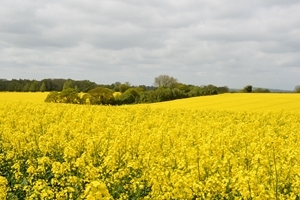 Because of the importance of this debate, and the potentially far-reaching consequences, restrictions on the use of neonics were introduced across the EU in December 2013. This legislation prohibited the use of imidacloprid, thiamethoxam and clothianidin on bee-attractive crops for two years, to allow scientists to investigate the potential effects on pollinators. During this time, much research has been performed, including some important field studies, and the temporary ban has been extended to allow the evidence base to accumulate and guide policy makers.
Because of the importance of this debate, and the potentially far-reaching consequences, restrictions on the use of neonics were introduced across the EU in December 2013. This legislation prohibited the use of imidacloprid, thiamethoxam and clothianidin on bee-attractive crops for two years, to allow scientists to investigate the potential effects on pollinators. During this time, much research has been performed, including some important field studies, and the temporary ban has been extended to allow the evidence base to accumulate and guide policy makers.
The impact of these restrictions was assessed in a 2016 report published by the Agriculture and Horticulture Development Board (AHDB). This estimated that reduced yields due to insufficient control of cabbage stem flea beetle in oilseed rape in the UK resulted in 22,000 ha of lost crops, with an annual value of £23m. The severity of these losses varies in different localities, with the east of the UK generally being more heavily affected than the west. When considering other impacts, the AHDB estimated a further £67m reduction in yield from increased transmission of the turnip yellow virus to oilseed rape as a result of neonic restrictions reducing control of the aphid vector.
Economically viable, large-scale agriculture that is capable of producing the food we need requires pest control, therefore if neonics are not available, alternatives will be needed. The ideal strategy, which adequately controls pests while having no negative environmental effects, is not currently available, leaving us to utilise the best we do have while working towards this holy grail.
GWCT position
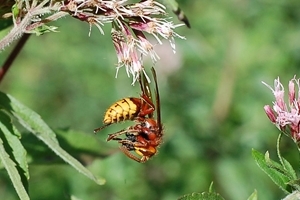 This is an emotive, political and scientific issue, and one of utmost importance. It is essential that policy decisions are firmly based on the scientific evidence, and that scientists have the freedom to conduct impartial research to address the complex underlying processes involved. Scientific research should be free of pressure from the media, policy makers and other stakeholders.
This is an emotive, political and scientific issue, and one of utmost importance. It is essential that policy decisions are firmly based on the scientific evidence, and that scientists have the freedom to conduct impartial research to address the complex underlying processes involved. Scientific research should be free of pressure from the media, policy makers and other stakeholders.
However, practical factors also play an important role. For example, one must consider the efficacy and environmental impacts of alternative insecticide treatments that would likely be substituted should neonics be further restricted. While we await a decision regarding extending/repealing the EU neonic moratorium, we support:
- The use of integrated pest management strategies in the first instance to reduce the requirement for chemical pest control
- Ongoing scientific research to address knowledge gaps in the literature both on the effects of neonics and alternative (both chemical and rotational) pest control
- A thorough review of the evidence base relating to the risks of neonic use or available alternatives
- Investment in the development of new generation neonics, with reduced non-target effects
- Further development of Integrated Pest Management Strategies and support to farmers in its use
Get your FREE neonicotinoids guide from the GWCT team
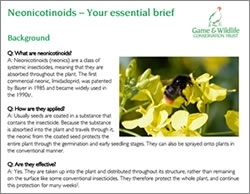 What's inside your FREE 8-page neonicotinoid guide
What's inside your FREE 8-page neonicotinoid guide
✓ Background
✓ Neonic effects on bees
✓ Neonictoniod regulations
Get your free guide >
References
1 Jeschke, P., Nauen, R., Schindler, M. & Elbert, A. Overview of the Status and Global Strategy for Neonicotinoids (dagger). J. Agric. Food Chem. 1–7 (2010). doi:10.1021/jf101303g
2 Budge, G. E. et al. Evidence for pollinator cost and farming benefits of neonicotinoid seed coatings on oilseed rape. Sci. Rep. 5, 12574 (2015).
3 Bonmatin, J. M. et al. Environmental fate and exposure; neonicotinoids and fipronil. Environ. Sci. Pollut. Res. 22, 35–67 (2015).
4 Botias, C. et al. Neonicotinoid Residues in Wildflowers, a Potential Route of Chronic Exposure for Bees. Environ. Sci. Technol. 49, 12731–12740 (2015).
5 Botías, C., David, A., Hill, E. & Goulson, D. Contamination of wild plants near neonicotinoid seed-treated crops, and implications for non-target insects. Sci. Total Environ. (2016).
6 Moffat, C. et al. Neonicotinoids target distinct nicotinic acetylcholine receptors and neurons, leading to differential risks to bumblebees. Sci. Rep. 6, 24764 (2016).
7 Van der Sluijs, J. P. et al. Neonicotinoids, bee disorders and the sustainability of pollinator services. Current Opinion in Environmental Sustainability 5, 293–305 (2013).
8 Fairbrother, A., Purdy, J., Anderson, T. & Fell, R. Risks of neonicotinoid insecticides to honeybees. Environ. Toxicol. Chem. 33, 719–731 (2014).
9 Gill, R. J., Ramos-Rodriguez, O. & Raine, N. E. Combined pesticide exposure severely affects individual- and colony-level traits in bees. Nature 491, 105–8 (2012).
10 Eisenstein, M. Seeking answers amid a toxic debate. Nature 521, S52–S55 (2015).
11 Blacquiere, T., Smagghe, G., Van Gestel, C. A. M. & Mommaerts, V. Neonicotinoids in bees: A review on concentrations, side-effects and risk assessment. Ecotoxicology 21, 973–992 (2012).
12 Cutler, G. C., Scott-Dupree, C. D., Sultan, M., McFarlane, A. D. & Brewer, L. A large-scale field study examining effects of exposure to clothianidin seed-treated canola on honey bee colony health, development, and overwintering success. PeerJ 2, e652 (2014).
13 Pilling, E., Campbell, P., Coulson, M., Ruddle, N. & Tornier, I. A Four-Year Field Program Investigating Long-Term Effects of Repeated Exposure of Honey Bee Colonies to Flowering Crops Treated with Thiamethoxam. PLoS One 8, (2013).
14 Feltham, H., Park, K. & Goulson, D. Field realistic doses of pesticide imidacloprid reduce bumblebee pollen foraging efficiency. Ecotoxicology 23, 317–323 (2014).
15 Rundlöf, M. et al. Seed coating with a neonicotinoid insecticide negatively affects wild bees. Nature 521, 77–80 (2015).
16 Pisa, L. W. et al. Effects of neonicotinoids and fipronil on non-target invertebrates. Environmental science and pollution research international 22, 68–102 (2015).
17 Douglas, M. R., Rohr, J. R. & Tooker, J. F. Neonicotinoid insecticide travels through a soil food chain, disrupting biological control of non-target pests and decreasing soya bean yield. J. Appl. Ecol. 52, 250–260 (2015).
18 Millot, F. et al. Etude des effets non-intentionnels de l’imidaclopride en traitement de semences sur la faune sauvage non-cible. Faune Sauvag. 309, 11–17 (2015).
19 Hallmann, C. a, Foppen, R. P. B., Turnhout, C. a M. Van, Kroon, H. De & Jongejans, E. Declines in insectivorous birds are associated with high neonicotinoid concentrations. Nature 511, 341–343 (2014).
20 Gilburn, A. S. et al. Are neonicotinoid insecticides driving declines of widespread butterflies? PeerJ 3, e1402 (2015).